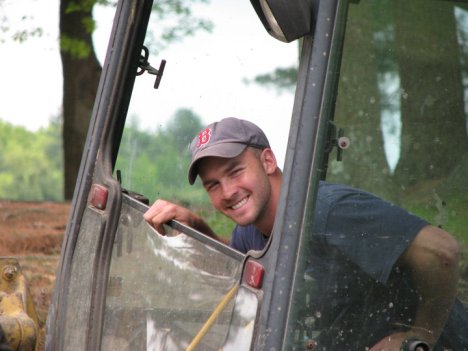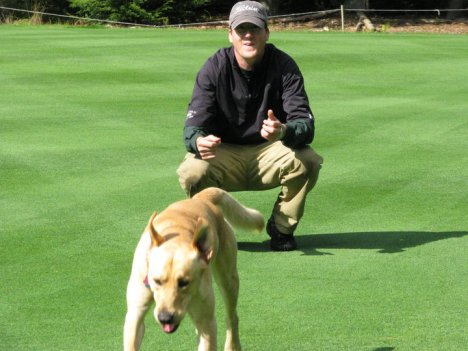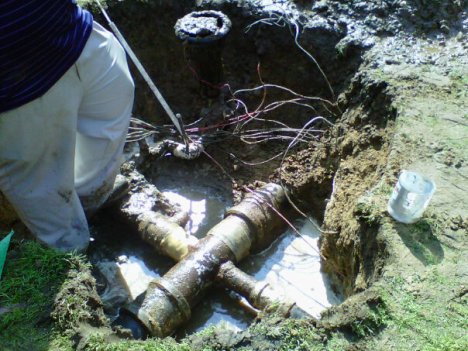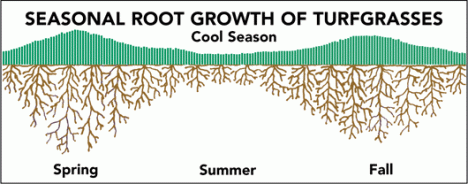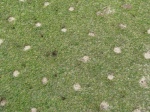It was two years ago this week that I found myself at a crossroad as far as my career was concerned. For the last two years I had been working in Foxboro, MA doing parts and service for a small company that specialized in selling and renting hydraulic excavators and pavers. I enjoyed what I did and even thought that if I continued to get better and learn what I was doing that it may hold a future for me. Such was not the case. The construction industry took a serious hit and as a result my employer could no longer justify my salary. Like so many others at that time I was laid off and searching for employment. After searching for a couple of months one of my friends notified me that he could get me a job working on the grounds crew at a local golf course. I dove at the opportunity and the result it was not only one of the most enjoyable summers to date but it also helped me realize my passion. After a summer of mowing fairways I found that I had an unsatisfiable hunger for everything turf. I absorbed all the knowledge and information that my workers would share with me and I would go home and do my own research so I could gain a better understanding of what I was doing on the course. Many of the workers on the grounds crew thought they knew everything about turf but I made it a goal of mine to actually go out and obtain the necessary knowledge so that I truly did know it.
Once the season was over I had a decision to make. I was laid off along with the majority of the grounds staff and at the time I could have either searched for another job and said goodbye or waited the winter out and continued doing what I knew I wanted too. I decided to wait it out and make a commitment. I knew that I would need to take a step up if I were going to be able to grow in the turf industry and so I decided to get bold and e-mail my boss one day. Here is the e-mail that I sent him.
I am writing to you at this time to formally express my interest in the internship program for this coming summer at Stow Acres. Over this past summer I have become familiar with the field of Turfgrass Management and I believe that it holds a future for me. By taking part in an internship program I would be able to further my knowledge in the field and take the proper steps to preparing myself for a successful career in turf.
I understand that you would preferably have your interns be currently enrolled in a Turfgrass program, however due to financial setbacks and a short time frame in which to organize my plans I was not able to enroll in the most recent UMass Amherst winter turf program as I had initially hoped to. With more time to plan and a clearer financial situation going forward I have now made definitive plans to enroll in the winter program immediately following this coming golf season.
I believe that I could benefit greatly learning from You, Harris, and Kevin throughout the summer and that such knowledge would be vital to my success in the field of Turfgrass Management. I have always been an intelligent and eager student and with yourselves as teachers the wealth of knowledge I could gain would be unbelievable. I am truly passionate about learning as much as possible about turf and I couldn’t see any better situation in which to learn than as an intern at Stow Acres. Through your mastery of turfgrass science, Harris’ knowledge of landscape construction, and Kevin’s expertise in irrigation I would be learning from the three best people possible.
My position as an intern could also be beneficial to the grounds crew given my availability in the early spring while most of the crew is still in school. I could prove to be a great asset to the team in an expanded leadership role given my availability along with my prior experience from working on the course last season as well as my familiarity with the course and crew members.
I have a hunger for knowledge of all things turf. It is a science that interests me incredibly. It would be a great opportunity to learn from you as an intern this summer. If given the chance I truly believe that I could be an integral part in the ongoing progress of Stow Acres in this forthcoming season. I have attached my resume for your consideration.
Thank You-
Andrew P. Lanigan”
With this e-mail I immediately let Jason know that I meant business and was in it for the long haul. He, in return, gave me the opportunity to grow and learn at a time that not many others would have. For this I am extremely thankful.
My message to anyone trying to make the jump from grounds staff worker to “turf manager” is that you should never be afraid to put yourself out there. Don’t ever hold back because you are scared that things might not work out. You should always work to achieve your goals and if those goals sometimes seem far away and unreachable then you shouldn’t be afraid to get creative in how you obtain those goals. If you know you can succeed then go ahead and let others know. You’ll be surprised how many people will be willing to help you along the way.
~Andrew P. Lanigan, Foreman~
Filed under: General | Leave a comment »






